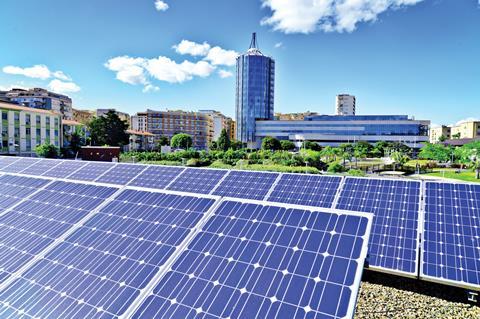The logistics warehouse of the future serves more than just the customer. It has a necessary communal, social and environmental part to play too.

Distribution centres today balance an extraordinary number of considerations, from last-touch centres and supply hubs to places that invite community participation and ecological opportunity. They must be sustainable, flexible, aware and built around sound environmental stewardship, social responsibility and governance (ESG) principles.
Setting out a strong ESG programme means building a culture of resilience that can stand the test of time. Solutions need to fit customers’ sustainability objectives and provide innovations that lower operating costs, increase efficiency and reduce environmental impacts.
Prologis is able to rely on more than a decade of data to help advise more informed development decisions and strengthen our customer and community relationships.
As part of our standard specification, since 2008 all our new buildings have been designed with the goal of attaining green building certification and according to sustainability rating systems, where appropriate and available.

We integrate forward-looking technologies and efficiencies such as smart metering and LED lighting and develop brownfield and infill sites. Many of our projects go further and build directly into the communities where we develop – whether by controlling soil pollutants in France through storm water management or, in the UK, creating bat conservation and wetland habitats.
Measurable impact
Initiatives with realistic sustainability goals make a measurable impact. We run sustainability awareness programmes at UK primary schools. In France, we house beehives to boost ecosystems and encourage biodiversity. And we have projects in the Netherlands that aim to improve warehouse workers’ health and wellbeing.
Creating opportunities for customers to meet their own sustainability needs also matters. Addressing obstacles such as labour supply in constrained areas is a natural evolutionary step and typical of being a good neighbour.
As part of our ESG programme, we are launching initiatives to help our customers meet their labour needs while boosting local employment. For example, in the UK, we launched a Social Value Charter for our supply chain – a framework to measure economic, environmental and community benefit. It aims to create opportunities for local employment, training and apprenticeships, including for those furthest from the job market.
Powering logistics buildings and reducing operational costs are also areas of keen interest for our customers. Green supply chain justification now firmly extends to industrial real estate performance. At our DIRFT III facility in the UK, Tesla Powerwall batteries use solar energy to eliminate the need to draw power from the grid on summer days.

Our Budapest-Harbor Park has integrated solar cells into the road to power electric car charging stations. And in Italy, France and Spain we have EEGLE, a digital tool connected to warehouses that among many things provides remote technical management and energy monitoring.
ESG is a natural fit in our business strategy. We face the future head on. It’s not only about conscious and responsible development; it’s about raising the bar for all aspects of sustainability – because, in keeping with staying ahead of what’s next, it’s the right thing for our customers, our employees, our investors and our communities.
Ben Bannatyne is president of Prologis Europe






























No comments yet